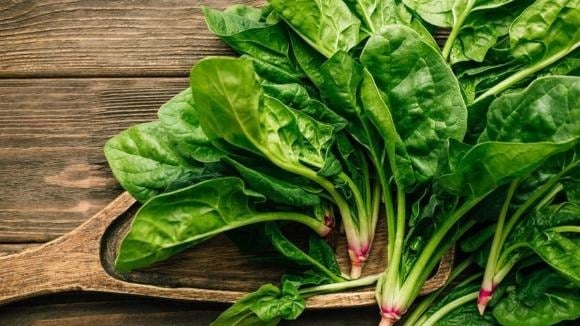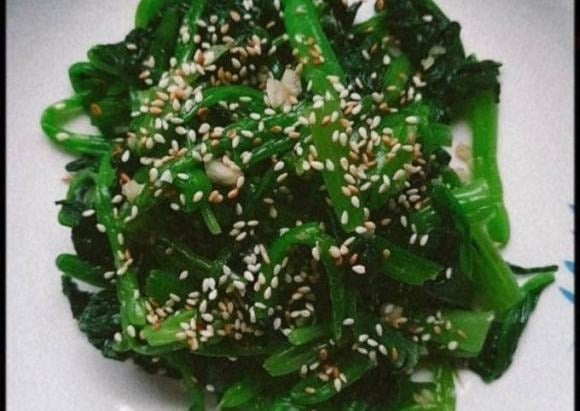Iron is an essential mineral that supports blood production, oxygen transport, brain development, and immune system enhancement. Red meat has long been considered a popular source of iron in daily diets. However, according to data from the United States Department of Agriculture (USDA), spinach boasts a significantly higher iron content.
Specifically, 100 grams of spinach contains approximately 2.7-3.57 mg of iron, whereas the same quantity of red meat provides only about 2.6 mg. This makes spinach an ideal choice for those seeking to boost their iron intake, particularly vegetarians, pregnant women, or individuals at risk of anemia.

Spinach is also rich in essential vitamins and minerals. In 100 grams of cooked spinach, there are over 2.9 grams of protein, nearly 2.4 grams of fiber, and a variety of micronutrients such as calcium, potassium, magnesium, phosphorus, zinc, manganese, and selenium. This leafy green also offers a diverse range of vitamins, including vitamins A, C, K, E, and B-complex vitamins.
Numerous scientific studies have highlighted the exceptional health benefits of spinach. Kayla Kopp, a nutritionist at Cleveland Clinic in the United States, comments, “Spinach is one of the most nutritious foods you can add to your diet. It’s incredibly versatile in cooking and caters to a wide range of taste preferences.” Spinach can be enjoyed raw in salads, blended into smoothies, stir-fried, boiled, added to soups, or incorporated into pasta dishes.
It’s no wonder that spinach is hailed as a “superfood” due to its extensive list of health benefits.
Cancer Prevention: Spinach is rich in antioxidants like lutein and zeaxanthin, which protect cells from the damaging effects of free radicals—a primary cause of cancer. Some studies even suggest that regular consumption of spinach may reduce the risk of prostate and breast cancer.
Lowering Blood Pressure: The high potassium and magnesium content in spinach helps dilate blood vessels and regulate blood pressure. One particular study found that drinking spinach juice reduced blood pressure within five hours of consumption.
Brain Health: The antioxidants and folate in spinach support brain function and slow down age-related memory decline. Vitamin K in spinach also helps prevent the buildup of amyloid plaque, a risk factor for Alzheimer’s disease.
Spinach can be prepared in a variety of delicious ways.
Digestive Health: Spinach is high in insoluble fiber, which promotes healthy bowel movements, aids digestion, and prevents constipation.
Blood Formation: With its high iron content, spinach is a natural choice for preventing iron-deficiency anemia, a common condition in women and the elderly.
Eye Health: The lutein and zeaxanthin in spinach protect the eyes from UV rays and blue light, reducing the risk of cataracts and age-related macular degeneration.

Although spinach originates from colder climates, it is now widely cultivated in Vietnam, especially in the cooler regions of Dalat and northern provinces such as Hanoi, Ha Nam, and Quang Ninh. The ideal growing season for spinach is from late autumn to early spring, when temperatures range between 18-20°C.
Today, fresh and frozen spinach is readily available in Vietnamese supermarkets and traditional markets. Prices typically range from 25,000 to 50,000 VND per kilogram, depending on the season. Thanks to its accessibility and affordability, spinach has become a staple in many Vietnamese households.






























